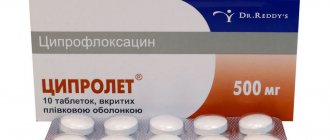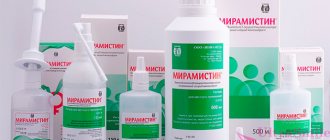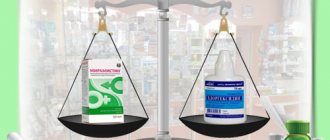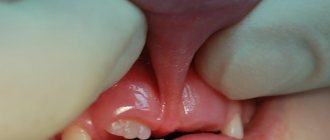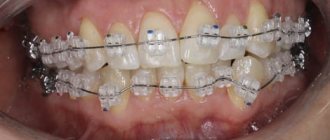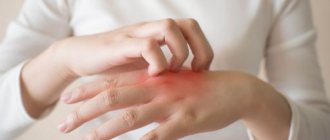If your baby suddenly stopped taking the breast or pacifier, began to be capricious, cry, and jerk his legs for no reason, then be sure to look into his mouth. Very often, newborn babies suffer from candidal stomatitis, otherwise called thrush. What is the reason for the appearance of this disease, as well as how to treat candidiasis with Miramistin - read about it below.
Parents, be careful! Monitor your baby's health
The main symptom of candidal stomatitis is the appearance of a white coating in the mouth. Some parents will say that newborns already have a white coating from milk. But the pathological plaque is different: it appears not only on the tongue and palate, but also on the gums, as well as the inside of the cheeks. In addition, such a coating is very difficult to remove if you run a spoon over your tongue. Under it you can see inflamed red spots, and it is on their basis that a diagnosis of candidal stomatitis can be made.
In addition to white plaque, signs of illness may also be observed in the baby’s mouth, such as:
- anxiety crumbs, moodiness,
- refusal of breast or bottle (if the baby is bottle-fed),
- crying while eating - the sucking process can cause pain to the child.
Causes of cheesy plaque in infants
The main cause of the disease is the penetration of the Candida fungus into the child’s oral cavity. In fact, these mushrooms are found in the body of every adult or child. But if a person has a strong immune system, then they do not harm him and coexist amicably. But with a weak immune system and poor breast treatment before feeding, this often leads to stomatitis. After all, newborn babies have practically no immunity, so any infection, including Candida fungi, can successfully take up residence in the baby’s body.
Other factors predisposing to the appearance of childhood candidiasis in the mouth are:
- Colds, dysbacteriosis while taking antibacterial drugs.
- Poor compliance by mother with hygiene rules. If a mother does not rinse her breasts or boil the baby’s bottles and nipples before feeding the baby, then she herself creates the preconditions for the development of candidiasis.
- Frequent burping of the baby.
Miramistin, 1 piece, 500 ml, 0.01%, solution for topical use
Locally.
The drug is ready for use.
Instructions for using the packaging with spray nozzle:
1. Remove the cap from the bottle and also remove the urological applicator from the 50 ml bottle.
2. Remove the supplied spray nozzle from its protective packaging.
3. Attach the spray nozzle to the bottle.
4. Activate the spray nozzle by pressing again.
Surgery, traumatology, combustiology.
For preventive and therapeutic purposes, the surface of wounds and burns is irrigated, wounds and fistula tracts are loosely tamponed, gauze swabs soaked in the drug are fixed. The treatment procedure is repeated 2–3 times a day for 3–5 days. A highly effective method of active drainage of wounds and cavities with a daily consumption of up to 1 liter of the drug.
Obstetrics, gynecology.
In order to prevent postpartum infection, it is used in the form of vaginal irrigation before childbirth (5–7 days), during childbirth after each vaginal examination and in the postpartum period, 50 ml of the drug in the form of a tampon with an exposure of 2 hours for 5 days. When women give birth by cesarean section, the vagina is treated immediately before the operation, the uterine cavity and the incision on it are treated during the operation, and in the postoperative period, tampons soaked in the drug are inserted into the vagina with an exposure of 2 hours for 7 days. Treatment of inflammatory diseases is carried out over a course of 2 weeks by intravaginal administration of tampons with the drug, as well as by the method of medicinal electrophoresis.
Venereology.
For the prevention of sexually transmitted diseases, the drug is effective if it is used no later than 2 hours after sexual intercourse. Using a urological applicator, insert the contents of the bottle into the urethra for 2-3 minutes: for men - 2-3 ml, for women - 1-2 ml and in the vagina - 5-10 ml. Treat the skin of the inner thighs, pubis, and genitals. After the procedure, it is recommended not to urinate for 2 hours.
Urology.
In the complex treatment of urethritis and urethroprostatitis, 2-3 ml of the drug is injected into the urethra 1-2 times a day, the course is 10 days.
Otorhinolaryngology.
For purulent sinusitis, during puncture the maxillary sinus is washed with a sufficient amount of the drug.
Tonsillitis, pharyngitis and laryngitis are treated by gargling and/or irrigation using a spray nozzle, pressing 3-4 times 3-4 times a day. The amount of drug per rinse is 10–15 ml.
Children.
In case of acute pharyngitis and/or exacerbation of chronic tonsillitis, the pharynx is irrigated using a spray nozzle. At the age of 3-6 years - 3-5 ml per irrigation (press the head of the spray nozzle once) 3-4 times a day; 7–14 years — 5–7 ml per irrigation (press twice) 3–4 times a day; over 14 years old - 10-15 ml per irrigation (3-4 times pressing) 3-4 times a day. The duration of therapy ranges from 4 to 10 days, depending on the timing of remission.
Dentistry.
For stomatitis, gingivitis, and periodontitis, it is recommended to rinse the mouth with 10–15 ml of the drug 3–4 times a day.
Forms and stages of development of candidal stomatitis
Before moving on to treatment of the disease, it is also important to find out what stages of development and forms of the disease exist. The following stages of disease development are distinguished:
- Easy stage. It is characterized by the fact that the baby is capricious and refuses to take the breast. Opening his mouth, the mother can find a white coating, and underneath there are red areas.
- Middle stage. The time between the first and second stage may vary. But in some cases this period may be only a few days. At this stage, plaque is also present, but it cannot be removed with a spoon. The baby cries a lot at the same time, because the painful film under the white coating brings him pain.
- Advanced stage. Under no circumstances should the disease be allowed to progress and enter the third stage. Here, pathogenic microorganisms begin to infect the baby’s intestines, as well as his genitals. At this stage, you can clearly feel a sharp, unpleasant odor from your mouth.
Also, candidal stomatitis in children can have an acute and chronic form. Acute candidiasis appears when the immune system is weakened and antibiotics are not taken in a controlled manner. In this case, the symptoms of the disease are pronounced, the disease develops quickly, and redness is observed. With prompt treatment, you can quickly achieve the displacement of white plaque. Chronic candidiasis occurs as a result of poor personal hygiene. If a baby once develops chronic thrush, then the mother will need to make a lot of efforts to ensure that there are no relapses in the future.
MIRAMISTIN external solution 0.01% 150 ml with spray.
Directions for use and doses
The drug is ready for use.
Instructions for using the packaging with spray nozzle:
1. Remove the cap from the bottle and also remove the urological applicator from the 50 ml bottle.
2. Remove the supplied spray nozzle from its protective packaging.
3. Attach the spray nozzle to the bottle.
4. Activate the spray nozzle by pressing again.
Surgery, traumatology, combustiology.
For preventive and therapeutic purposes, the surface of wounds and burns is irrigated, wounds and fistula tracts are loosely tamponed, gauze swabs soaked in the drug are fixed. The treatment procedure is repeated 2-3 times a day for 3-5 days. A highly effective method of active drainage of wounds and cavities with a daily consumption of up to 1 liter of the drug.
Obstetrics, gynecology.
In order to prevent postpartum infection, it is used in the form of vaginal irrigation before childbirth (5-7 days), during childbirth after each vaginal examination and in the postpartum period, 50 ml of the drug in the form of a tampon with an exposure of 2 hours, for 5 days. When women give birth by cesarean section, the vagina is treated immediately before the operation, the uterine cavity and the incision on it are treated during the operation, and in the postoperative period tampons soaked in the drug are inserted into the vagina with an exposure of 2 hours for 7 days. Treatment of inflammatory diseases is carried out over a course of 2 weeks by intravaginal administration of tampons with the drug, as well as by the method of medicinal electrophoresis.
Venereology.
For the prevention of sexually transmitted diseases, the drug is effective if it is used no later than 2 hours after sexual intercourse. Using a urological applicator, insert the contents of the bottle into the urethra for 2-3 minutes: for men (2-3 ml), for women (1-2 ml) and into the vagina (5-10 ml). Treat the skin of the inner thighs, pubis, and genitals. After the procedure, it is recommended not to urinate for 2 hours.
Urology.
In the complex treatment of urethritis and urethroprostatitis, 2-3 ml of the drug is injected into the urethra 1-2 times a day, the course is 10 days.
Otorhinolaryngology.
For purulent sinusitis, during puncture the maxillary sinus is washed with a sufficient amount of the drug. Tonsillitis, pharyngitis and laryngitis are treated by gargling, throat and/or irrigation using a spray nozzle, pressing 3-4 times, 3-4 times a day. The amount of drug per rinse is 10-15 ml.
In children.
In case of acute pharyngitis and/or exacerbation of chronic tonsillitis, the pharynx is irrigated using a spray nozzle. Children aged 3-6 years: by pressing the head of the spray nozzle once (3-5 ml per irrigation), 3-4 times a day, for children aged 7-14 years by pressing twice (5-7 ml per irrigation) , 3-4 times a day, for children over 14 years old, by pressing 3-4 times (10-15 ml per irrigation) 3-4 times a day. The duration of therapy ranges from 4 to 10 days, depending on the timing of remission.
Dentistry.
For stomatitis, gingivitis, periodontitis, it is recommended to rinse the mouth with 10-15 ml of the drug 3-4 times a day.
Treatment of stomatitis in infants with a drug for astronauts
Few people know that the familiar Miramistin solution for oral thrush in infants was originally intended for astronauts. Developed in the 70s, the drug already coped excellently with a large number of harmful microorganisms. Later (after the collapse of the Soviet Union) production of this medicine was discontinued. However, scientists still managed to restore further development of the drug, and today the Miramistin solution is used in many areas of medicine: surgery, traumatology, dentistry, venereology, etc. Today this remedy is successfully used to combat stomatitis in children.
Miramistin solution 0.01% 50 ml bottle with spray in St. Petersburg
Locally.
The drug is ready for use.
Instructions for using the packaging with spray nozzle:
- Remove the cap from the bottle and also remove the urological applicator from the 50 ml bottle.
- Remove the supplied spray nozzle from its protective packaging.
- Attach the spray nozzle to the bottle.
- Activate the spray nozzle by pressing again.
Surgery, traumatology, combustiology.
For preventive and therapeutic purposes, the surface of wounds and burns is irrigated, wounds and fistula tracts are loosely tamponed, gauze swabs soaked in the drug are fixed. The treatment procedure is repeated 2–3 times a day for 3–5 days. A highly effective method of active drainage of wounds and cavities with a daily consumption of up to 1 liter of the drug.
Obstetrics, gynecology.
In order to prevent postpartum infection, it is used in the form of vaginal irrigation before childbirth (5–7 days), during childbirth after each vaginal examination and in the postpartum period, 50 ml of the drug in the form of a tampon with an exposure of 2 hours for 5 days. When women give birth by cesarean section, the vagina is treated immediately before the operation, the uterine cavity and the incision on it are treated during the operation, and in the postoperative period, tampons soaked in the drug are inserted into the vagina with an exposure of 2 hours for 7 days. Treatment of inflammatory diseases is carried out over a course of 2 weeks by intravaginal administration of tampons with the drug, as well as by the method of medicinal electrophoresis.
Venereology.
For the prevention of sexually transmitted diseases, the drug is effective if it is used no later than 2 hours after sexual intercourse. Using a urological applicator, insert the contents of the bottle into the urethra for 2-3 minutes: for men - 2-3 ml, for women - 1-2 ml and in the vagina - 5-10 ml. Treat the skin of the inner thighs, pubis, and genitals. After the procedure, it is recommended not to urinate for 2 hours.
Urology.
In the complex treatment of urethritis and urethroprostatitis, 2-3 ml of the drug is injected into the urethra 1-2 times a day, the course is 10 days.
Otorhinolaryngology.
For purulent sinusitis, during puncture the maxillary sinus is washed with a sufficient amount of the drug.
Tonsillitis, pharyngitis and laryngitis are treated by gargling and/or irrigation using a spray nozzle, pressing 3-4 times 3-4 times a day. The amount of drug per rinse is 10–15 ml.
Children.
In case of acute pharyngitis and/or exacerbation of chronic tonsillitis, the pharynx is irrigated using a spray nozzle. At the age of 3-6 years - 3-5 ml per irrigation (press the head of the spray nozzle once) 3-4 times a day; 7–14 years — 5–7 ml per irrigation (press twice) 3–4 times a day; over 14 years old - 10-15 ml per irrigation (3-4 times pressing) 3-4 times a day. The duration of therapy ranges from 4 to 10 days, depending on the timing of remission.
Dentistry.
For stomatitis, gingivitis, and periodontitis, it is recommended to rinse the mouth with 10–15 ml of the drug 3–4 times a day.
Tips for moms to prevent childhood candidiasis
- If the mother was diagnosed with candidiasis during pregnancy , then she must cure the disease, otherwise the baby risks becoming infected with a Candida fungus during childbirth. The same applies to breastfeeding women.
- It is necessary to walk with your baby every day to strengthen his immunity.
- Before feeding your baby with formula, be sure to boil the pacifier and bottle in a soda solution.
- breastfed baby . Mom must definitely take care of the cleanliness of the mammary glands.
- Parents should monitor the health of the newborn . If you suspect thrush, you should definitely call a doctor and not self-medicate.
